
Palermo: The Heart of Sicily
Discover Palermo, a vibrant city where ancient history, diverse cultures, and delicious cuisine come together to create an unforgettable experience in the heart of Sicily.
Palermo, the capital of Sicily, is a city where history, culture, and cuisine blend seamlessly. This ancient city, founded by the Phoenicians, has been shaped by various civilizations including the Greeks, Romans, Arabs, and Normans. Each group has left its mark, resulting in a rich tapestry of architectural wonders, artistic treasures, and culinary delights. Stroll through the bustling streets of Palermo and you'll discover a vibrant mix of markets, churches, and palaces. The Ballarò and Vucciria markets are perfect spots to experience the local flavors and scents. These markets offer a feast for the senses with their colorful produce, fresh seafood, and street food stalls. Don't miss trying the local specialties like arancini, panelle, and cannoli. Palermo is also home to stunning architecture, from the majestic Palermo Cathedral with its Arab-Norman influences to the opulent Palazzo dei Normanni, which houses the beautiful Cappella Palatina. The city's churches, such as San Giovanni degli Eremiti and Santa Maria dell'Ammiraglio, showcase a blend of Byzantine, Norman, and Arab styles. For art lovers, the Galleria Regionale della Sicilia in Palazzo Abatellis and the Teatro Massimo, one of the largest opera houses in Europe, are must-visit attractions. The city's rich history and diverse cultural influences are also reflected in its festivals and events, such as the Feast of Santa Rosalia, which celebrates the patron saint of Palermo with parades, music, and fireworks. Whether you're a history buff, a foodie, or an art enthusiast, Palermo has something to offer every traveler. Its unique charm and character make it a must-visit destination on any trip to Italy.
Local tips in Palermo
- Visit the local markets early in the morning to experience the freshest produce and the liveliest atmosphere.
- Wear comfortable shoes as the best way to explore Palermo is on foot, especially in the historic center.
- Try traditional Sicilian street food like arancini, panelle, and sfincione for an authentic culinary experience.
- Learn a few basic Italian phrases; locals will appreciate the effort and it will enhance your experience.
- Be mindful of the siesta hours, typically from 1 PM to 4 PM, when many shops and attractions may be closed.
Neighbourhoods in Palermo
Palermo: The Heart of Sicily
Palermo, the capital of Sicily, is a city where history, culture, and cuisine blend seamlessly. This ancient city, founded by the Phoenicians, has been shaped by various civilizations including the Greeks, Romans, Arabs, and Normans. Each group has left its mark, resulting in a rich tapestry of architectural wonders, artistic treasures, and culinary delights. Stroll through the bustling streets of Palermo and you'll discover a vibrant mix of markets, churches, and palaces. The Ballarò and Vucciria markets are perfect spots to experience the local flavors and scents. These markets offer a feast for the senses with their colorful produce, fresh seafood, and street food stalls. Don't miss trying the local specialties like arancini, panelle, and cannoli. Palermo is also home to stunning architecture, from the majestic Palermo Cathedral with its Arab-Norman influences to the opulent Palazzo dei Normanni, which houses the beautiful Cappella Palatina. The city's churches, such as San Giovanni degli Eremiti and Santa Maria dell'Ammiraglio, showcase a blend of Byzantine, Norman, and Arab styles. For art lovers, the Galleria Regionale della Sicilia in Palazzo Abatellis and the Teatro Massimo, one of the largest opera houses in Europe, are must-visit attractions. The city's rich history and diverse cultural influences are also reflected in its festivals and events, such as the Feast of Santa Rosalia, which celebrates the patron saint of Palermo with parades, music, and fireworks. Whether you're a history buff, a foodie, or an art enthusiast, Palermo has something to offer every traveler. Its unique charm and character make it a must-visit destination on any trip to Italy.
When is the best time to go to Palermo?
Iconic landmarks you can’t miss
Teatro Massimo
Discover the grandeur of Teatro Massimo, Italy's largest opera house, showcasing the best of performing arts in Palermo's vibrant cultural scene.
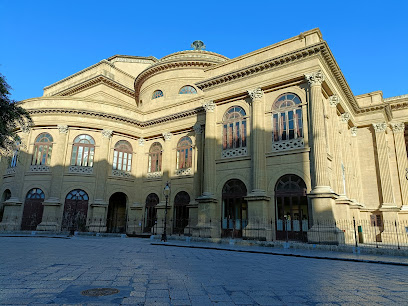
Palermo Cathedral
Discover the architectural splendor and historical significance of Palermo Cathedral, a must-see landmark in Sicily's vibrant capital.
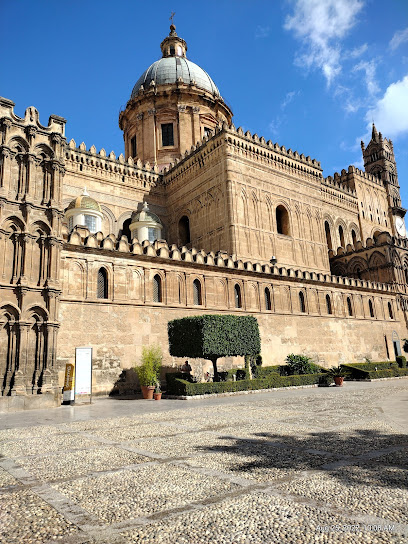
Cattedrale di Monreale
Discover the stunning mosaics and rich history of Cattedrale di Monreale, a must-visit cathedral in Sicily that showcases Norman architectural brilliance.
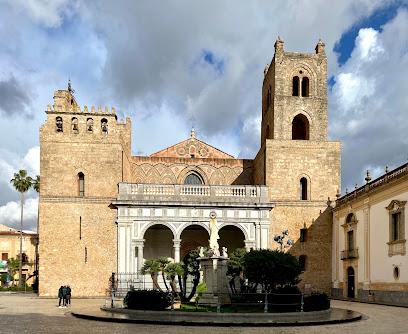
Quattro Canti
Explore the historic Quattro Canti square in Palermo, where stunning Baroque architecture meets vibrant Sicilian culture, a must-see for every traveler.
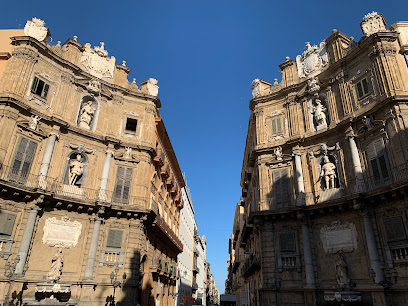
Norman Palace
Discover the Norman Palace: A UNESCO World Heritage Site in Palermo, showcasing exquisite architecture and rich historical significance.
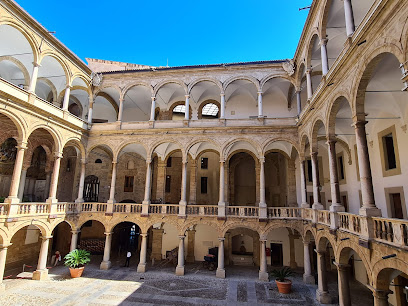
Catacombe dei Cappuccini
Explore the haunting Catacombe dei Cappuccini in Palermo, a museum of mummified remains that reveals the city's unique burial practices and rich history.
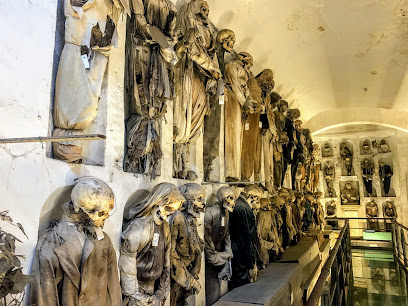
Foro Italico
Explore the picturesque Foro Italico, a coastal park in Palermo, where nature meets culture in a vibrant and relaxing atmosphere.
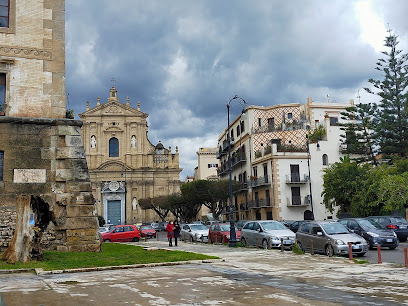
Royal Palace and Palatine Chapel
Experience the rich history and breathtaking artistry of the Royal Palace and Palatine Chapel, a highlight of Palermo's cultural heritage.
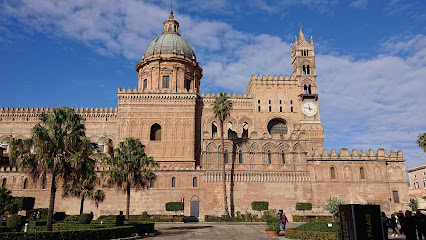
Fontana Pretoria
Discover the stunning Fontana Pretoria in Palermo, a captivating blend of Renaissance art and lively Sicilian culture, perfect for your travel experience.
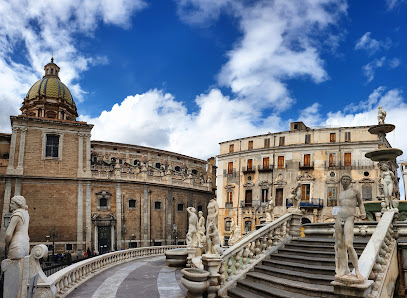
Zisa Palace
Discover the enchanting Zisa Palace in Palermo, a stunning castle reflecting Sicily's rich history and architectural beauty.
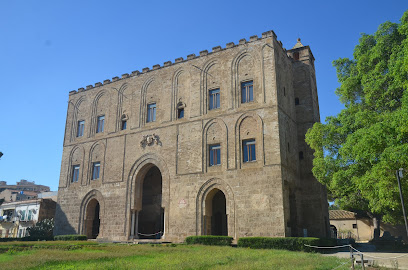
Giardino Garibaldi
Discover the tranquil beauty of Giardino Garibaldi, a historic park in Palermo, brimming with exotic plants, charming paths, and cultural treasures.
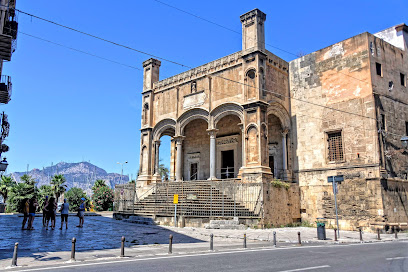
Church of St. Mary of the Admiral
Experience the rich history and stunning architecture of the Church of St. Mary of the Admiral in Palermo, a highlight of Arab-Norman heritage.

Chiesa del Gesù di Casa Professa
Explore the Baroque elegance of Chiesa del Gesù di Casa Professa in Palermo, where art and history converge in a breathtaking setting.
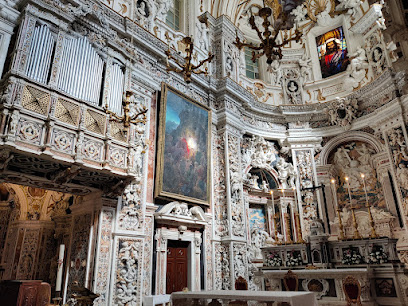
Regional Archeological Museum Antonio Salinas
Explore ancient treasures at the Regional Archeological Museum Antonio Salinas in Palermo, home to remarkable Greek and Roman artifacts showcasing Sicily's rich history.
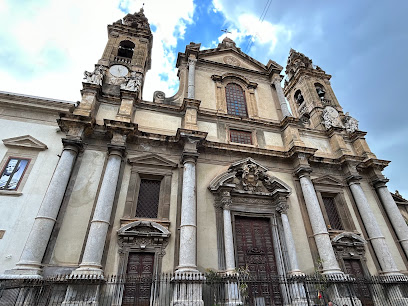
Palazzo Abatellis
Discover the artistic legacy of Sicily at Palazzo Abatellis, featuring a stunning collection of artworks and a beautiful Gothic architectural backdrop.
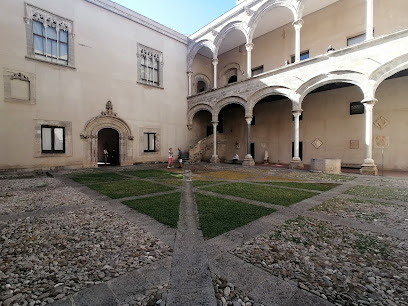
Unmissable attractions to see
Teatro Massimo
Experience the grandeur of Teatro Massimo, Palermo's largest opera house, where history, architecture, and world-class performances come together in a cultural masterpiece.
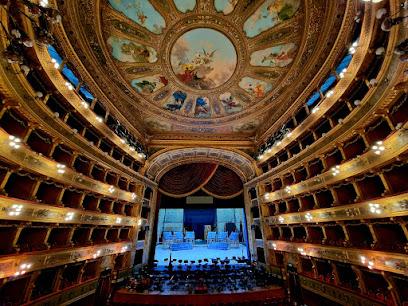
Palermo Cathedral
Discover the stunning Palermo Cathedral, a beautiful blend of architectural styles and rich history, located in the heart of Sicily's vibrant capital.
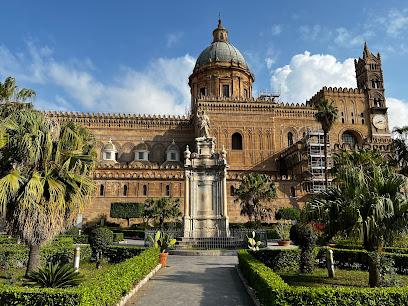
Cattedrale di Monreale
Explore the Cattedrale di Monreale, a UNESCO World Heritage site, and immerse yourself in the rich history and breathtaking mosaics of Sicilian architecture.
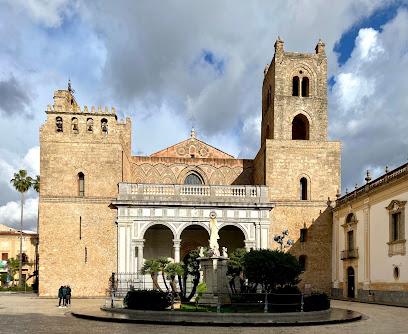
Norman Palace
Explore the Norman Palace in Palermo, a UNESCO World Heritage site showcasing rich Sicilian history and stunning architectural beauty.
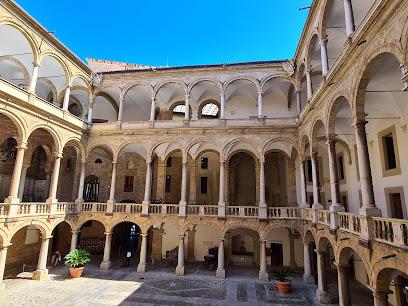
Catacombe dei Cappuccini di Palermo
Explore the haunting beauty of the Catacombs of Palermo, a captivating museum revealing the mysteries of life and death in Sicilian culture.

Teatro Politeama Garibaldi
Experience the splendor of Teatro Politeama Garibaldi, Palermo's iconic opera house, where culture and history come alive through enchanting performances.
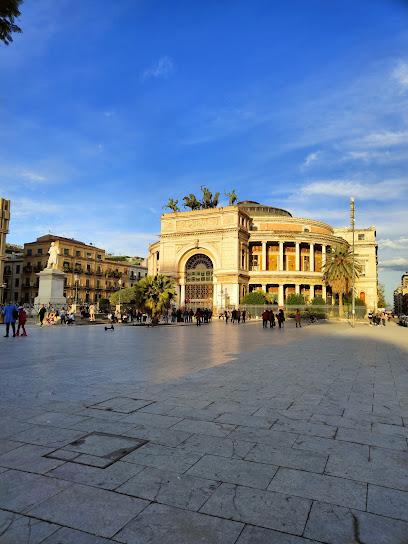
Tonnara di Scopello
Explore the Tonnara di Scopello, a historical tuna fishery in Sicily that offers breathtaking coastal views and insights into ancient fishing traditions.
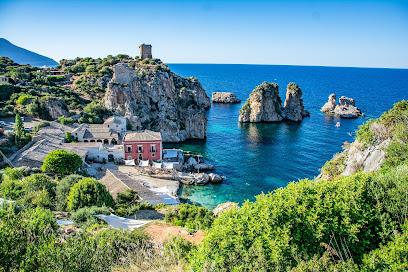
Royal Palace and Palatine Chapel
Explore the Royal Palace and Palatine Chapel in Palermo, a UNESCO World Heritage site showcasing stunning mosaics and rich architectural history.
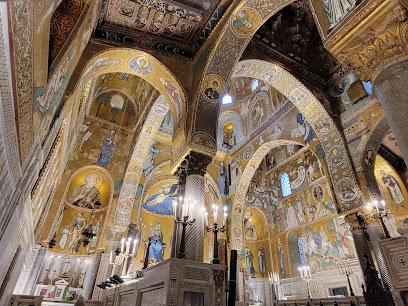
Foro Italico
Discover the natural beauty and historical charm of Foro Italico, a must-visit park in Palermo, ideal for relaxation and cultural experiences.
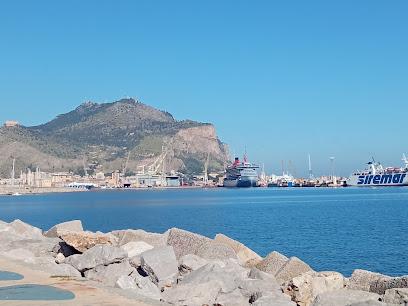
Orto Botanico di Palermo
Discover the lush landscapes and diverse plant species at Orto Botanico di Palermo, a serene botanical garden in the heart of Sicily.
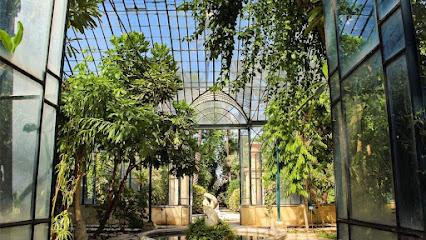
Santuario di Santa Rosalia
Explore the breathtaking Santuario di Santa Rosalia, a sacred site in Palermo offering stunning views, rich history, and spiritual tranquility.
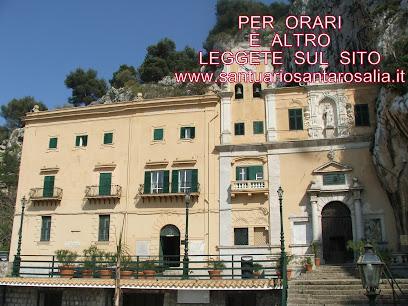
Praetorian Fountain
Discover the stunning Praetorian Fountain in Palermo, a breathtaking fusion of art and history that enchants every visitor.
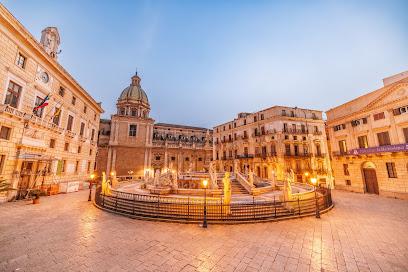
Guidaloca beach
Experience the breathtaking beauty of Guidaloca Beach in Castellammare del Golfo, a perfect blend of relaxation, adventure, and Sicilian charm.
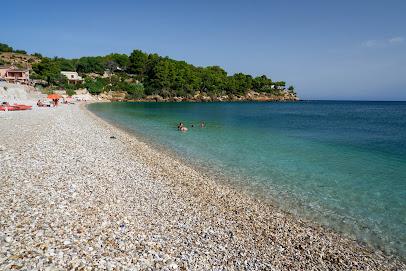
Marina di Castellammare del Golfo
Experience the beauty and charm of Marina di Castellammare del Golfo, a perfect blend of natural beauty, rich culture, and exciting activities.
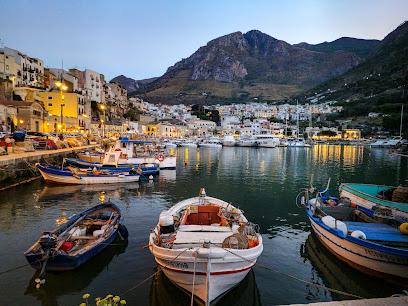
Belvedere Castellammare del Golfo
Discover the stunning panoramas at Belvedere Castellammare del Golfo, a scenic gem in Sicily ideal for photography and relaxation.
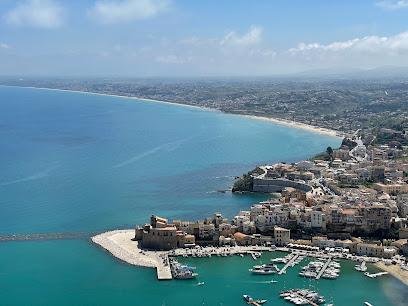
Essential places to dine
Antica Focacceria San Francesco
Discover the heart of Sicilian cuisine at Antica Focacceria San Francesco, where tradition meets flavor in every bite.
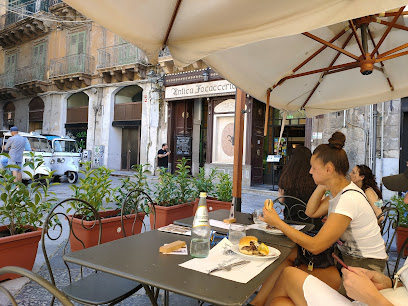
Taverna Dei Canti
Discover authentic Sicilian flavors at Taverna Dei Canti in Palermo - a culinary gem offering traditional dishes in a warm atmosphere.

Osteria Ballarò
Experience authentic Sicilian cuisine at Osteria Ballarò - where tradition meets flavor in the heart of Palermo.
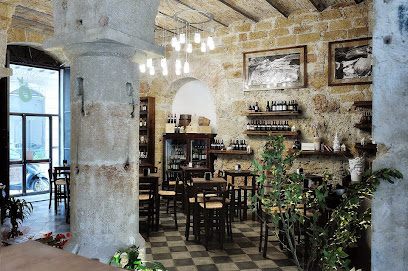
Buatta Cucina Popolana
Experience authentic Sicilian cuisine at Buatta Cucina Popolana in Palermo - where tradition meets flavor in every dish.
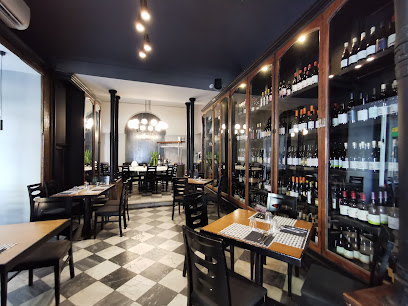
Ristorante La Galleria
Experience authentic Sicilian cuisine at Ristorante La Galleria in Palermo - where tradition meets modern culinary art.
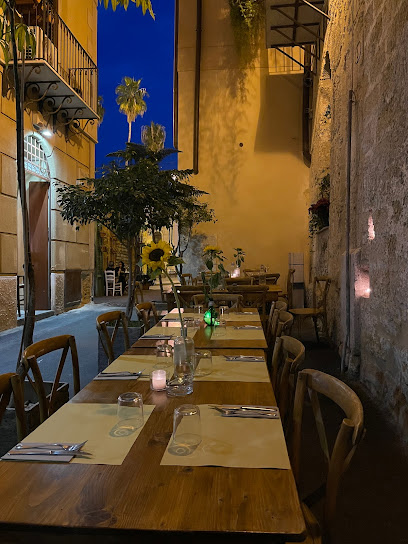
Trattoria Al Vecchio Club Rosanero
Experience authentic Italian and Sicilian cuisine at Trattoria Al Vecchio Club Rosanero in Palermo, where tradition meets flavor.
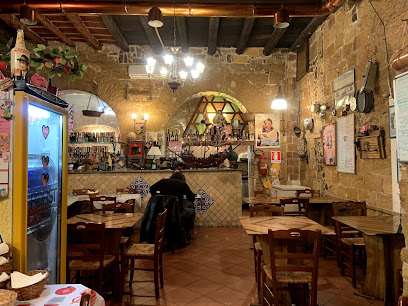
Osteria Mercede
Experience authentic Sicilian flavors at Osteria Mercede, where tradition meets culinary excellence in the heart of Palermo.
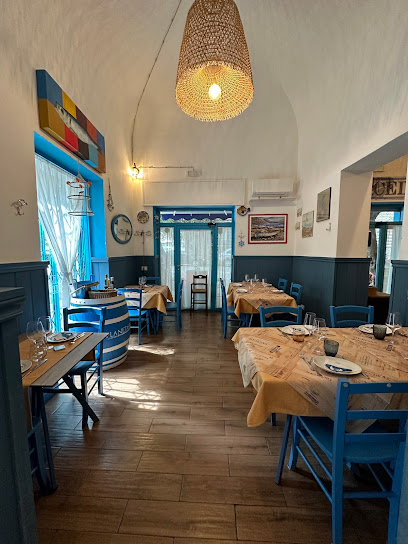
Trattoria Del Massimo
Experience authentic Sicilian cuisine at Trattoria Del Massimo in Palermo—where tradition meets flavor in every dish.
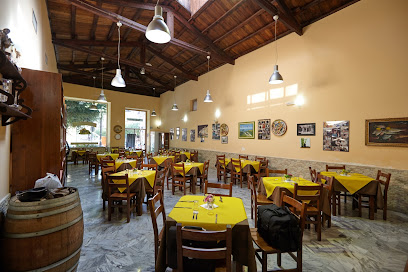
Il Cambusone
Experience authentic Sicilian seafood at Il Cambusone in Palermo – where tradition meets flavor in every bite.
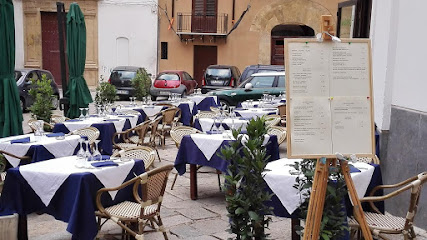
Il Culinario
Experience authentic Italian cuisine at Il Culinario in Palermo – a delightful journey through flavors with every dish.
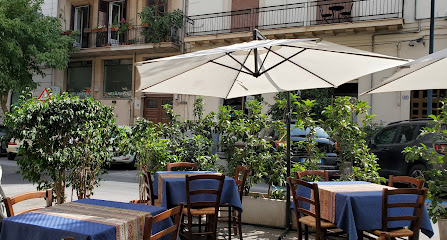
Caffè del Kassaro
Discover authentic Italian flavors at Caffè del Kassaro in Palermo - where tradition meets taste in every dish.
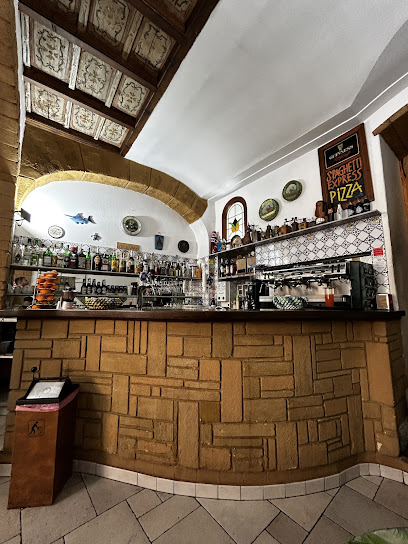
A'nìca Ristorante & Pizza Gourmet
Discover authentic Sicilian flavors at A'nìca Ristorante & Pizza Gourmet in Palermo - where tradition meets modern culinary excellence.
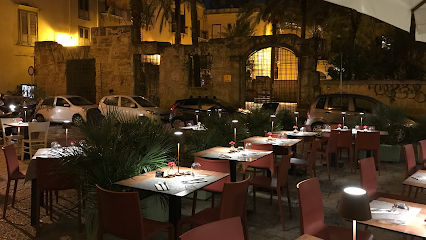
Ristorante Quattro mani
Discover authentic Sicilian cuisine at Ristorante Quattro Mani in Palermo - where tradition meets flavor in every dish.
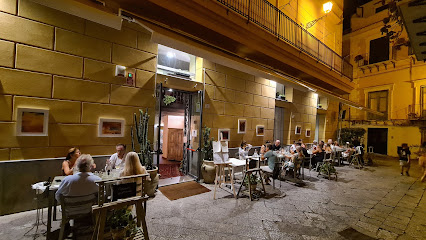
RISTORANTE PRIMI PIATTI
Experience authentic Italian cuisine at Ristorante Primi Piatti in Palermo – where every bite tells a story of tradition and flavor.
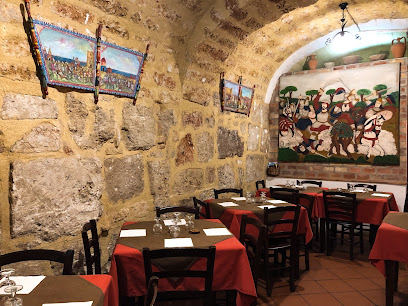
Da Bacco
Experience authentic Italian dining at Da Bacco in Palermo - where every dish tells a story of tradition and flavor.
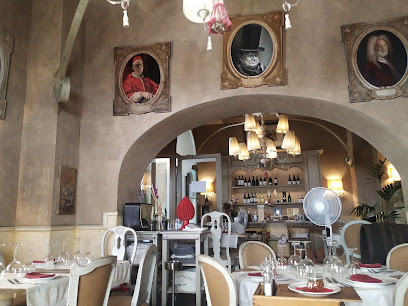
Markets, malls and hidden boutiques
Centro Commerciale Forum Palermo
Explore the eclectic shopping, dining, and entertainment at Centro Commerciale Forum Palermo, the ultimate retail destination in Sicily.
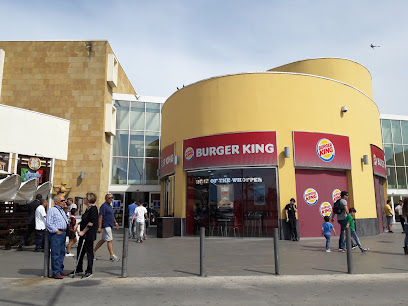
Rinascente Palermo
Discover Rinascente Palermo, the ultimate shopping destination that showcases the finest Sicilian brands and international fashion in a stunning setting.
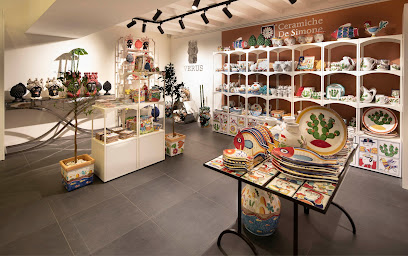
Louis Vuitton Palermo
Discover the epitome of luxury shopping at Louis Vuitton Palermo, featuring exquisite leather goods, fashion accessories, and timeless elegance.
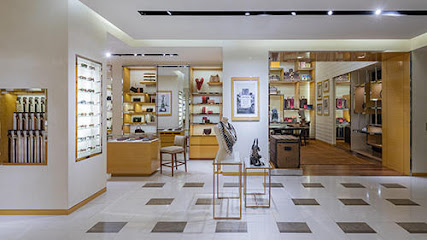
Antique Market
Explore the Antique Market in Palermo, a vibrant hub of history and unique collectibles, perfect for tourists seeking a taste of Sicilian charm.
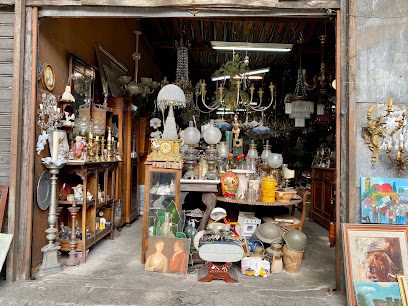
Cassaro Bottega Alimentare
Explore the authentic flavors of Sicily at Cassaro Bottega Alimentare, your go-to supermarket for organic products and local artisanal crafts.
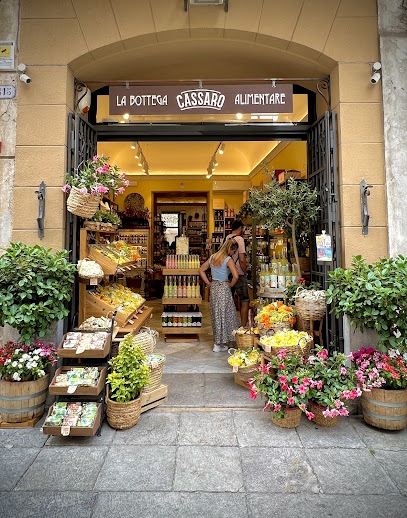
Centro Mega outlet
Explore Centro Mega Outlet in Palermo for unbeatable deals on fashion, accessories, and more in a vibrant shopping atmosphere.
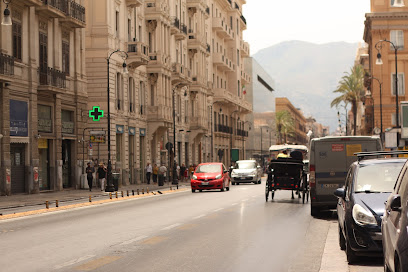
Yankee Shop
Explore the vibrant Yankee Shop in Palermo, where fashion meets sportswear in a unique shopping experience for every style.
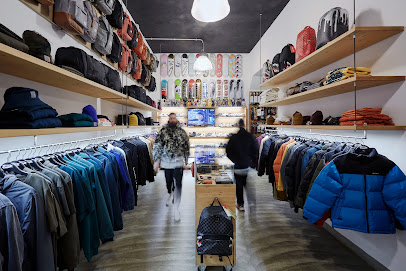
Tanto di coppola!
Explore Tanto di Coppola! in Palermo, a unique hat shop offering exquisite craftsmanship and a stylish selection of fashion accessories.
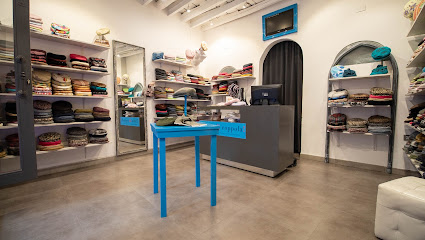
Ridding Market dell'Usato
Explore Ridding Market dell'Usato: A Unique Flea Market in Palermo Filled with Antiques, Vintage Finds, and Collectibles for Every Enthusiast.
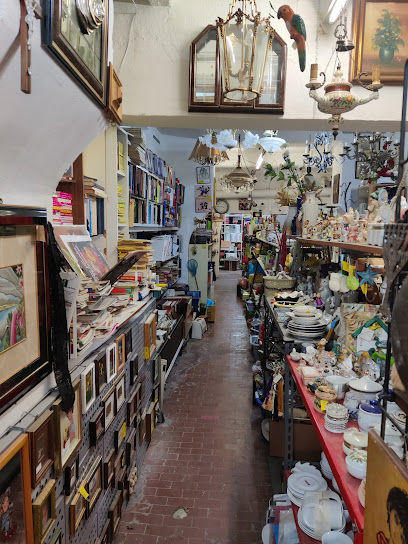
Avaliani
Discover Avaliani in Palermo, where handmade fashion meets Sicilian elegance, perfect for unique clothing and jewelry.
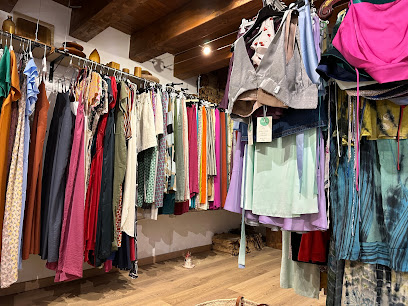
Prada Palermo
Explore luxury fashion at Prada Palermo, where timeless elegance meets modern trends in the heart of Sicily.
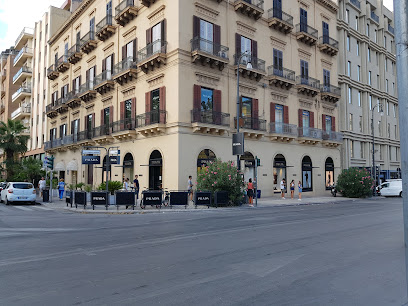
Modwear - Clothing, Shoes & Records
Experience Palermo's unique blend of style and sound at Modwear - the ultimate vintage clothing and record store.
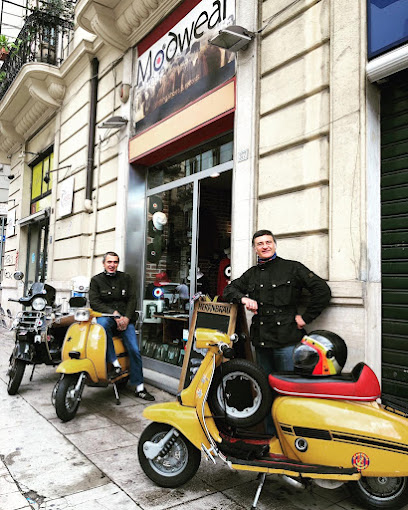
Magazzini Anita
Explore the eclectic world of vintage fashion at Magazzini Anita, a treasure trove of unique clothing and accessories in Palermo.
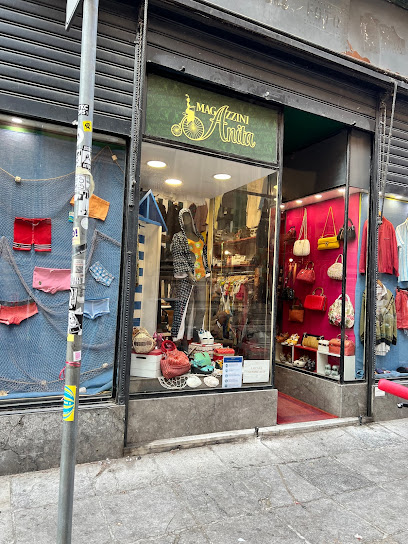
iLove Concept Store
Explore unique collectibles and innovative electronics at iLove Concept Store, Palermo’s iconic shopping destination for novelty treasures.
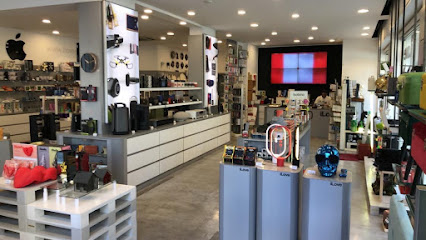
Melania Caruso boutique
Explore exquisite women's fashion and accessories at Melania Caruso Boutique in Palermo, a must-visit destination for style enthusiasts.
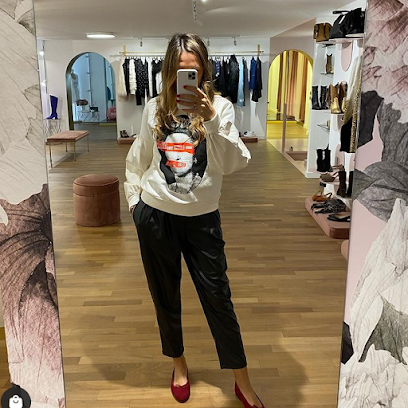
Essential bars & hidden hideouts
Mak Mixology
Discover Mak Mixology in Palermo, where exquisite cocktails meet live jazz in a vibrant atmosphere of culinary delights.
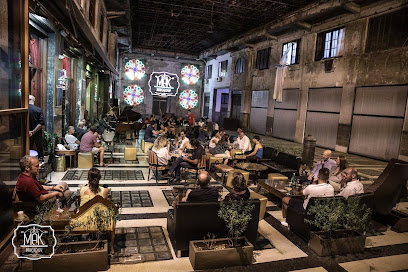
Monkey pub
Discover the vibrant atmosphere of Monkey Pub in Palermo, where local culture meets fantastic drinks and friendly vibes.
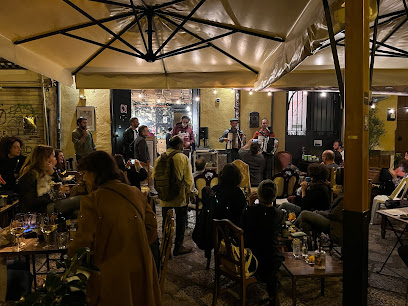
QVIVI BAR MUSICA
Discover the lively ambiance and eclectic live music scene at QVIVI BAR MUSICA in Palermo.
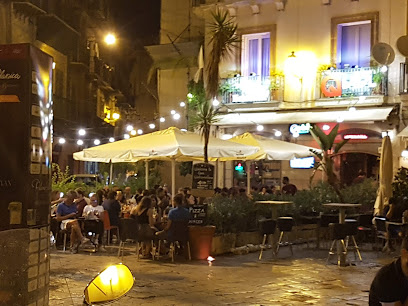
Botteghe Colletti
Experience the vibrant nightlife of Palermo at Botteghe Colletti, where delightful cocktails meet friendly faces in a charming atmosphere.
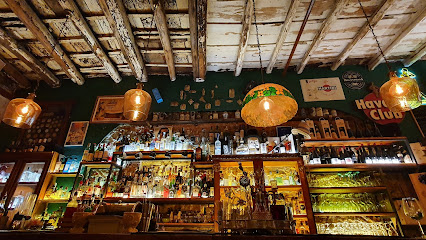
Workshop Of God
Discover the lively nightlife of Palermo at Workshop Of God, where innovative cocktails and a vibrant atmosphere await your visit.
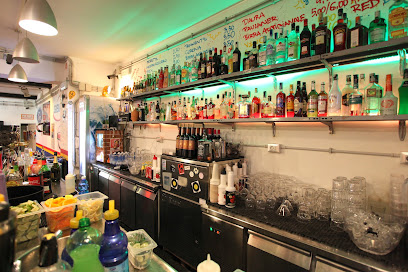
Bar Liberty
Experience the vibrant nightlife of Palermo at Bar Liberty, where innovative cocktails meet Sicilian charm and hospitality.
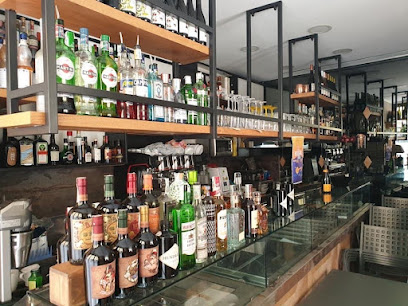
Goccio - L’arte del miscelare
Discover the art of mixology at Goccio in Palermo, where cocktails meet creativity in a vibrant atmosphere.
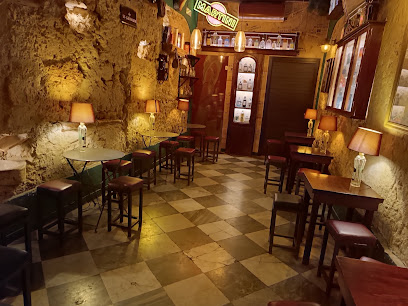
Vinile Bar
Experience the vibrant nightlife of Palermo at Vinile Bar, a unique pub with a warm atmosphere and a diverse drink selection.
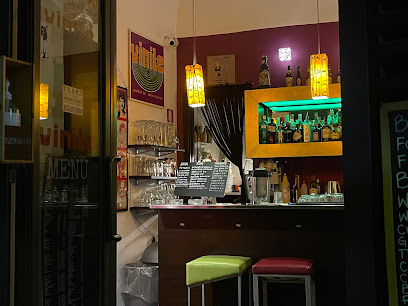
La Gintoneria Palermo
Discover La Gintoneria Palermo, a vibrant pub specializing in exquisite gin cocktails and a lively atmosphere, perfect for a night out in Palermo.
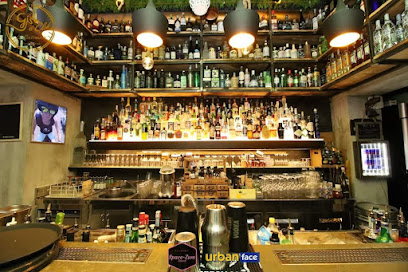
Botanico Bar
Discover the vibrant nightlife of Palermo at Botanico Bar, where art, music, and cocktails come together in a unique cultural experience.
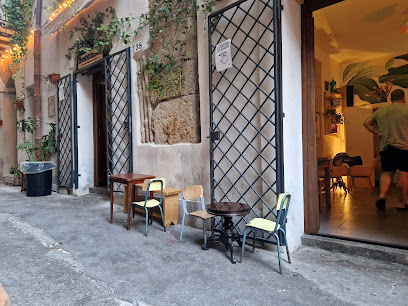
Finch Pub
Discover Finch Pub in Palermo: A lively destination for drinks, local flavors, and unforgettable nights out in the heart of Sicily.
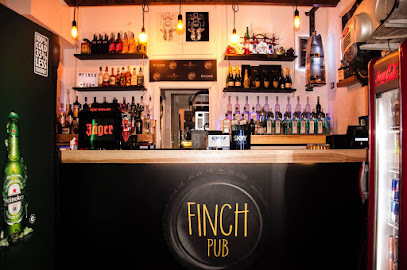
Bottega Monteleone
Discover authentic Sicilian flavors and an extensive wine selection at Bottega Monteleone, Palermo's premier wine bar.
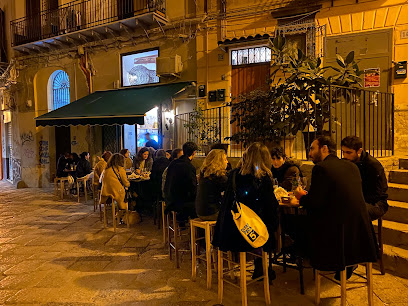
SPINA BAR PALERMO
Discover the vibrant atmosphere and innovative cocktails at Spina Bar Palermo, a must-visit cocktail oasis in the heart of Sicily.
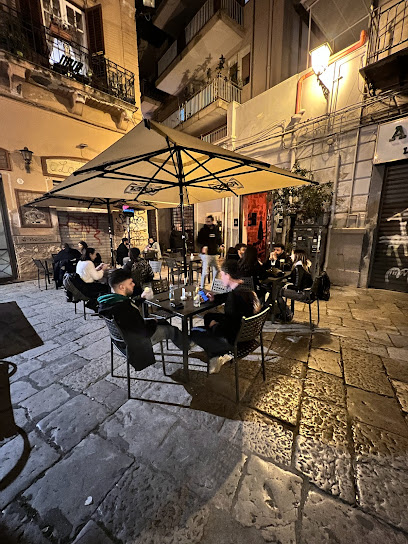
Zammù Drink&More - Pub, Lounge Bar, Cocktail bar
Discover the essence of Palermo's nightlife at Zammù Drink&More, where craft cocktails and vibrant atmosphere await you.
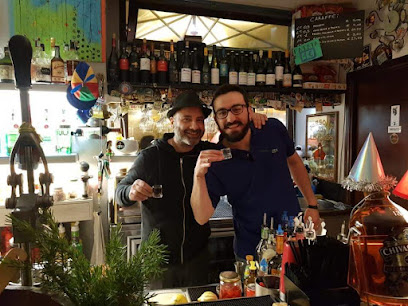
Ai Bastioni
Experience authentic Sicilian hospitality at Ai Bastioni, a charming bar in Palermo offering a delightful array of drinks and a cozy atmosphere.
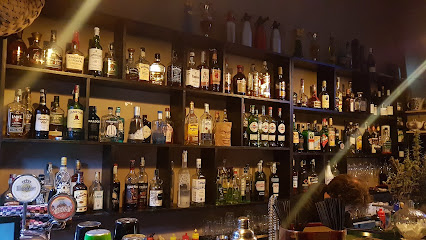
Local Phrases
-
- HelloCiao
[chow] - GoodbyeAddio
[ad-dyoh] - YesSì
[see] - NoNo
[noh] - Please/You're welcomePer favore/Prego
[pair fah-voh-reh/pray-goh] - Thank youGrazie
[grah-tsyeh] - Excuse me/SorryMi scusi/Scusa
[mee skoo-zee/skoo-sah] - How are you?Come stai?
[koh-meh stah-ee] - Fine. And you?Bene. E tu?
[beh-neh. eh too] - Do you speak English?Parli inglese?
[pahr-lee een-gleh-zeh] - I don't understandNon capisco
[non kah-pee-skoh]
- HelloCiao
-
- I'd like to see the menu, pleaseVorrei vedere il menù, per favore
[vohr-ray veh-deh-reh eel meh-noo, pair fah-voh-reh] - I don't eat meatNon mangio carne
[non mahn-joh kahr-neh] - Cheers!Salute!
[sah-loo-teh] - I would like to pay, pleaseVorrei pagare, per favore
[vohr-ray pah-gah-reh, pair fah-voh-reh]
- I'd like to see the menu, pleaseVorrei vedere il menù, per favore
-
- Help!Aiuto!
[ah-yoo-toh] - Go away!Vai via!
[vy vee-ah] - Call the Police!Chiama la polizia!
[kyah-mah lah poh-lee-tsyah] - Call a doctor!Chiama un dottore!
[kyah-mah oon doh-toh-reh] - I'm lostMi sono perso
[mee soh-noh pehr-soh] - I'm illMi sento male
[mee sehn-toh mah-leh]
- Help!Aiuto!
-
- I'd like to buy...Vorrei comprare...
[vohr-ray kohm-prah-reh] - I'm just lookingSto solo guardando
[stoh soh-loh gwar-dahn-doh] - How much is it?Quanto costa?
[kwahn-toh koh-stah] - That's too expensiveÈ troppo caro
[eh troh-poh kah-roh] - Can you lower the price?Puoi abbassare il prezzo?
[pwoh-ee ab-bah-sah-reh eel preh-tsoh]
- I'd like to buy...Vorrei comprare...
-
- What time is it?Che ora è?
[keh oh-rah eh] - It's one o'clockÈ l'una
[eh loo-nah] - Half past (10)Sono le dieci e mezza
[soh-noh leh dyeh-chee eh meht-sah] - MorningMattina
[maht-tee-nah] - AfternoonPomeriggio
[poh-meh-ree-joh] - EveningSera
[seh-rah] - YesterdayIeri
[yeh-ree] - TodayOggi
[oh-jee] - TomorrowDomani
[doh-mah-nee] - 1Uno
[oo-noh] - 2Due
[dweh] - 3Tre
[treh] - 4Quattro
[kwah-troh] - 5Cinque
[cheen-kweh] - 6Sei
[say] - 7Sette
[seht-teh] - 8Otto
[oh-toh] - 9Nove
[noh-veh] - 10Dieci
[dyeh-chee]
- What time is it?Che ora è?
-
- Where's a/the...?Dov'è...?
[doh-veh] - What's the address?Qual è l'indirizzo?
[kwahl eh leen-dee-ree-tsoh] - Can you show me (on the map)?Puoi mostrarmi (sulla mappa)?
[pwoh-ee moh-stahr-mee soo-lah mahp-pah] - When's the next (bus)?Quando passa il prossimo (autobus)?
[kwahn-doh pahs-sah eel prohs-see-moh ow-toh-boos] - A ticket (to ....)Un biglietto (per ....)
[oon beel-lyet-toh pair]
- Where's a/the...?Dov'è...?
History of Palermo
-
Palermo's origins trace back to the 8th century BC when it was established by the Phoenicians. Known as 'Ziz' during this period, the city served as an essential trading post connecting the Western and Eastern Mediterranean. The strategic location of Palermo facilitated the exchange of goods, ideas, and cultures, laying the groundwork for its diverse and rich heritage.
-
In 254 BC, during the First Punic War, Palermo fell under Roman control. The city, renamed 'Panormus,' became an integral part of the Roman Empire. It flourished as a crucial port and commercial hub, benefiting from Roman infrastructure, including roads, aqueducts, and public buildings. Roman Palermo saw the construction of grand villas and the establishment of a thriving urban culture.
-
Following the fall of the Western Roman Empire, Palermo entered a period of Byzantine rule in the 6th century AD. In 831 AD, the city was conquered by the Aghlabids, marking the beginning of a prosperous Arab era. Renamed 'Balarm,' Palermo became the capital of the Emirate of Sicily. The Arabs introduced advanced agricultural practices, new architectural styles, and a vibrant cultural and intellectual life that significantly influenced the city's development.
-
In 1072, the Normans, led by Roger I, captured Palermo, ending Arab rule. The city became the capital of the newly established Kingdom of Sicily in 1130 under Roger II. This period saw a fusion of Norman, Arab, and Byzantine influences, resulting in a unique architectural and cultural blend. Notable landmarks from this era include the Palermo Cathedral, the Palatine Chapel, and the Zisa Palace, showcasing the city's grandeur and cosmopolitan nature.
-
The Hohenstaufen dynasty, originating from Germany, took control of Palermo in the 12th century. Under the rule of Frederick II, the city experienced a renaissance of art, science, and literature. Frederick II, known as 'Stupor Mundi' (Wonder of the World), established Palermo as a center of learning and culture. The city's intellectual life flourished, attracting scholars, poets, and artists from across Europe and the Arab world.
-
Palermo came under Spanish control in 1409, marking the beginning of centuries of foreign domination. The city became part of the Spanish Empire and later the Bourbon Kingdom of the Two Sicilies. Despite the oppressive rule, Palermo remained a significant economic and cultural center. The Spanish and Bourbon periods left their mark on the city's architecture, with the construction of grand palaces, churches, and public buildings that still stand today.
-
Palermo played a crucial role in the Italian unification movement known as the Risorgimento. In 1860, Giuseppe Garibaldi's Expedition of the Thousand landed in Sicily, leading to the overthrow of the Bourbon rule. Palermo was one of the first major cities to join the Kingdom of Italy. The city's participation in the unification process marked a new chapter in its history, as it became part of a unified and modern Italian state.
-
During World War II, Palermo suffered significant damage from Allied bombings. The post-war period was marked by extensive reconstruction efforts aimed at restoring the city's infrastructure and historical landmarks. Despite the challenges, Palermo emerged as a resilient city, maintaining its cultural heritage while embracing modernization. The city's post-war recovery contributed to its vibrant urban life and continued importance as a cultural and economic hub in Sicily.
-
Today, Palermo is a bustling metropolis that reflects its rich historical tapestry. The city's streets are a living museum, showcasing a blend of ancient, medieval, and modern influences. Palermo's vibrant markets, such as Ballarò and Vucciria, offer a glimpse into its diverse cultural heritage. The city's culinary scene, influenced by centuries of foreign rule, is renowned for its unique flavors and traditional dishes. Modern Palermo continues to celebrate its history while evolving as a dynamic and cosmopolitan city.
Palermo Essentials
-
Palermo is well-connected by air, sea, and land. The main gateway is Falcone-Borsellino Airport (PMO), located about 35 kilometers west of the city center. The airport offers numerous domestic and international flights. From the airport, you can take a taxi, rental car, or the Prestia e Comandè bus service, which runs frequently to the city center. Palermo is also accessible by ferry from several ports in Italy, including Naples, Cagliari, and Genoa. The central train station, Palermo Centrale, connects the city to other major Italian cities via Trenitalia.
-
Public transportation in Palermo includes buses and trams operated by AMAT. Tickets can be purchased at newsstands, tobacco shops, or via the AMAT app. Taxis are readily available, but ensure the meter is running or agree on a fare beforehand. For more flexibility, consider renting a scooter or car. The historic center is best explored on foot due to its narrow streets and traffic restrictions. Alternatively, bike rentals are available for those who prefer cycling.
-
The official currency in Palermo is the Euro (€). Credit and debit cards are widely accepted in hotels, restaurants, and shops, but it is advisable to carry some cash for smaller establishments and markets. ATMs are plentiful throughout the city. It’s smart to notify your bank of your travel plans to avoid any issues with card transactions.
-
Palermo is generally safe, but like any major city, it has areas where tourists should exercise caution. Be particularly vigilant in crowded areas like markets and public transport to avoid pickpocketing. Neighborhoods such as Ballarò and Vucciria markets are vibrant but can be less safe at night. Stick to well-lit, populated areas after dark. Always keep your belongings secure and be aware of your surroundings.
-
In case of emergency, dial 112, the general emergency number for police, fire, and medical services. The main hospital, Ospedale Civico, is well-equipped for serious health issues. Pharmacies are abundant and can provide over-the-counter medications. It's advisable to have travel insurance that covers medical emergencies. For minor issues, many pharmacists speak English and can offer advice.
-
Fashion: Do dress modestly, especially when visiting religious sites. Avoid beachwear and overly casual attire in the city. Religion: Do respect local customs. Always cover your shoulders and knees when entering churches. Public Transport: Do validate your ticket before boarding. Don’t speak loudly or eat on public transport. Greetings: Do greet with a 'Buongiorno' (Good morning) or 'Buonasera' (Good evening). A kiss on each cheek is common among friends. Eating & Drinking: Do try local dishes and wines. Don’t rush your meals; dining is a leisurely activity.
-
To experience Palermo like a local, visit Mercato di Ballarò or Mercato del Capo for fresh produce, street food, and local goods. Take a passeggiata (evening stroll) along Via Maqueda or Via Vittorio Emanuele. Enjoy a granita or gelato at a local café. For a unique experience, explore the less touristy neighborhoods like Kalsa and Olivella. Don't miss traditional Sicilian treats like arancini, cannoli, and panelle.
Trending Landmark in Palermo
-
Teatro Massimo
-
Palermo Cathedral
-
Cattedrale di Monreale
-
Quattro Canti
-
Norman Palace
-
Catacombe dei Cappuccini
-
Foro Italico
-
Royal Palace and Palatine Chapel
-
Fontana Pretoria
-
Zisa Palace
-
Giardino Garibaldi
-
Church of St. Mary of the Admiral
-
Chiesa del Gesù di Casa Professa
-
Regional Archeological Museum Antonio Salinas
-
Palazzo Abatellis
Nearby Cities to Palermo
-
Things To Do in Catania
-
Things To Do in Taormina
-
Things To Do in Marsalforn
-
Things To Do in Xaghra
-
Things To Do in Gozo
-
Things To Do in Xlendi
-
Things To Do in Xewkija
-
Things To Do in Mellieha
-
Things To Do in Qawra
-
Things To Do in Bugibba
-
Things To Do in Mgarr
-
Things To Do in St. Julian's
-
Things To Do in Mdina
-
Things To Do in Rabat
-
Things To Do in Sliema


















